
Sign up for our free newsletter and get more of Development Asia delivered to your inbox.
- Find Events
- Topics ADB Administration and Governance Agriculture and Natural Resources Capacity Development Civil Society Climate Change Disaster Risk Management Economics Education Energy Environment Evaluation Finance Gender Equality Governance and Public Sector Management Health ICT Industry and Trade Knowledge Management Poverty Private Sector Public-Private Partnership Regional Cooperation and Integration Social Development and Protection Transport Urban Development Water
- Upload Content
- Find Speakers
- ADB's Southeast Asia Development Symposium (SEADS...

ADB's Southeast Asia Sustainable Tourism Hub Launched at #SEADS2022
The Asian Development Bank (ADB) launched the Southeast Asia Sustainable Tourism Hub at the third Southeast Asia Development Symposium (SEADS) held on 16–17 March 2022.
The tourism hub aims to help accelerate the industry's recovery from the pandemic, boost inclusive, sustainable development in the sector, and help local tourism entrepreneurs, especially women and youth, adopt digital platforms to grow their businesses. Southeast Asia's tourism industry was among the hardest hit by the pandemic, as arrivals plunged by 82% in 2020, forcing many travel businesses to close shop and millions to lose jobs.
Last year, ADB established a $1.7 million technical assistance facility to help revive the industry. The facility will help countries identify and prepare environmentally sustainable tourism projects and catalyze private financing to support them. It will help businesses better operate tourism facilities and deliver digital tourism services. It will also help policy makers design visa, online short-term rental, and other policies to attract longer-staying, higher-spending visitors and remote workers, allow more small entrepreneurs to legitimately operate accommodation services, and boost tourism tax revenues.
The tourism hub is housed on the SEADS website.
Visit the tourism hub: https://seads.adb.org/tourism-hub Read: What Southeast Asian Countries Need to Do to Shift to Sustainable Tourism: https://seads.adb.org/solutions/what- ...
For insights on solutions to helping Southeast Asian countries address development challenges, visit https://seads.adb.org
Disclaimer The views expressed on this website are those of the authors and do not necessarily reflect the views and policies of the Asian Development Bank (ADB) or its Board of Governors or the governments they represent. ADB does not guarantee the accuracy of the data included in this publication and accepts no responsibility for any consequence of their use. By making any designation of or reference to a particular territory or geographic area, or by using the term “country” in this document, ADB does not intend to make any judgments as to the legal or other status of any territory or area.

Southeast Asia Sustainable Tourism Hub Launched at SEADS 2022
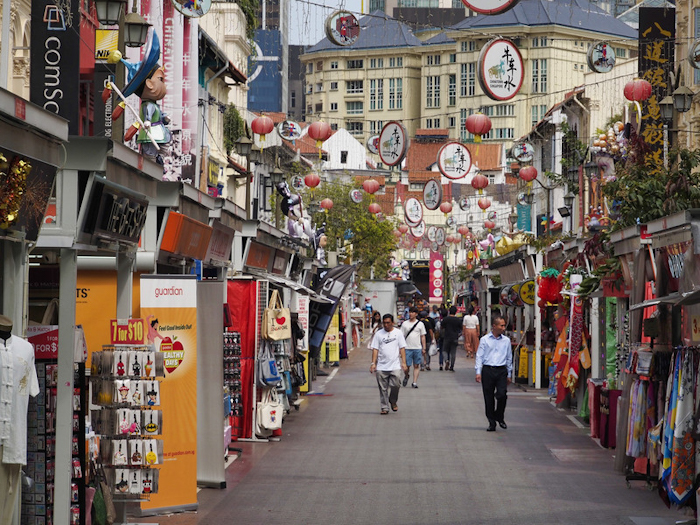
The Asian Development Bank (ADB) launched the Southeast Asia Sustainable Tourism Hub on 17 March 2022 at the third Southeast Asia Development Symposium (SEADS).
Southeast Asia’s tourism industry is still reeling from the impact of the COVID-19 pandemic. To accelerate an inclusive and sustainable recovery, ADB is increasing its support for investments, capacity development, and knowledge.
The online hub, anchored in ADB’s Southeast Asia Department, Urban Development and Water Division, brings together diverse expertise from within and outside of ADB to help clients develop and finance innovative tourism projects, build destination management capacity, and provide knowledge solutions that align with ADB Strategy 2030 and the Sustainable Development Goals . Offering regional perspective, strong country presence, and partnerships, the Southeast Asia Sustainable Tourism Hub promises to deliver quality development solutions for Southeast Asia’s tourism industry.
Read the news release , and watch the video below to know more:
Natus cupiditate rem modi quibusdam possimus. Eaque voluptates aliquam earum dignissimos sunt rerum maiores aperiam. Illo nemo rem qui qui et. Tempore aliquam natus nesciunt quibusdam rerum sequi provident esse.
Vang Vieng, Lao PDR
Adb’s southeast asia sustainable tourism hub launched at #seads2022.
- 31 May 2022
It brings together diverse expertise from within and outside of ADB to help Southeast Asian countries develop and finance innovative tourism projects, build destination management capacity, and provide knowledge solutions that align with ADB Strategy 2030 and the Sustainable Development Goals .

How women tourism entrepreneurs can succeed in a volatile business environment

Mekong Tourism Newsletter – September 2024 Issue

Follow Us on Social Media
Subscribe Newsletter
Follow Us On Social Media
© Mekongtourism.org 2024, All Rights Reserved. Privacy Policy I Terms & Conditions
- Mekong Tourism Coordinating Office (MTCO)
- GMS Member Countries
- MTCO Activities
- GMS Tourism Minister Meetings Member Countries
- GMS Tourism Working Group Meetings
- MTCO Publications
- Partners & Supporters
- About Mekong Tourism Forum 2024
- Destination
- Registration
- Mekong Travel Tips
- Travel News
- Press Releases
- Visa & Immigration
- Mekong Voices
- Mekong’s Hidden Gems
- Mekong’s Community Charm
- Mekong’s Easy Getaway
- Interactive Mekong Map
- Tourism Performance
- Privacy Policy
- [email protected]
About > News
Southeast Asia: Pathways to resilience and sustainability in tourism
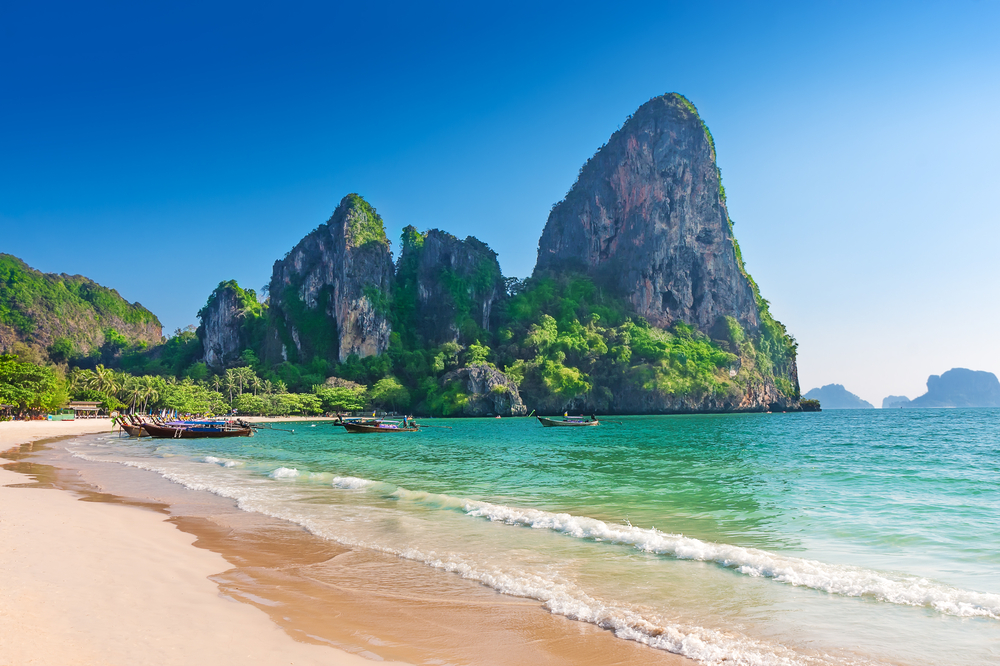
Could Southeast Asia’s enormous tourism industry be more sustainable and inclusive in a post-Covid era? Do countries in the region have to accept adverse environmental and social impacts from tourism because of its economic contribution?
Researchers from nine Association of South East Asian Nations (ASEAN) member countries, and representatives of regional tourism and environmental organisations and UN agencies grappled with these issues at a Bangkok policy roundtable “Southeast Asian Tourism after Covid-19: Pathways towards Resilience and Sustainability”, hosted by Mahidol University and co-funded by WUN. They proposed strategies and policies to transform tourism, making it better for people and ecosystems.
In his introductory remarks, co-organiser Andreas Neef, Professor in Development Studies at the University of Auckland emphasised that tourism is vital to the region’s economies. Before the COVID-19 pandemic – which devastated livelihoods and jobs – it supported more than 20% of total GDP and employment in Cambodia, the Philippines and Thailand. It’s important across ASEAN countries but unsustainable tourism has been a persistent problem. Overdependency on the tourism sector and the exploitation of natural resources and the environment are big concerns.
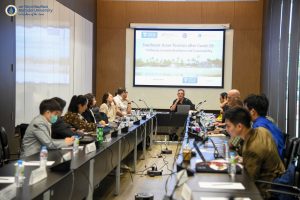
Photo courtesy of Mahidol University
Attendees from the Asian Ecotourism Network, the Pacific-Asia Travel Association, the Mekong Tourism Coordinating Office and the United Nations Development Programme heard reports from Brunei Darussalam, Cambodia, Indonesia, Lao PDR, Malaysia, Myanmar, Philippines, Singapore, Thailand and Vietnam about the pandemic’s impact on tourism and societies. New Zealand’s Ministry of Foreign Affairs and Trade had commissioned nine country reports and nine policy briefs within a two-year project led by researchers at the University of Auckland, which also examined the countries’ pandemic response measures and long-term recovery strategies.
Dr. Walanchalee Wattanacharoensil of Mahidol University said, “It was a fruitful workshop with insights about both common and distinct issues for countries across the region. International collaboration gives a unique opportunity to learn from one another and embrace new ideas for sustainable tourism management and development.”
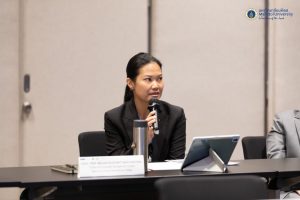
The research team had synthesised findings from each country to make six policy recommendations towards a more sustainable, resilient and just tourism economy across the region:
- diversifying tourism products and greening the tourism economy
- enhancing the digital transformation of the tourism sector
- strengthening regional cooperation and participatory multi-stakeholder mechanisms
- refocusing government support to Micro, Small & Medium Enterprises (MSMEs)
- retaining, retraining and upskilling formal and informal tourism workers
- strengthening the sector’s resilience through effective crisis management strategies
“Tourism income is crucial: many ASEAN member states are developing countries,” added Walanchalee Wattanacharoensil. “We need tourism to be strong, resilient, inclusive and sustainable. Everyone knows the importance of mitigating the industry’s impact on the environment and we must diversify tourism within countries and the region. If some of the region’s countries can attract higher-quality visitors [1] they could generate the same value to jobs and livelihoods but with less tourists and reduce the burden on national resources and tourism environments.”
Now tourism is “bouncing back,” added Associate Professor Jamie Gillen from Global Studies at the University of Auckland, but “an age-old conversation is growth versus protection and sustainability. We are in the perfect moment to rethink tourism and sustainability – what priorities and boundaries should we set?”
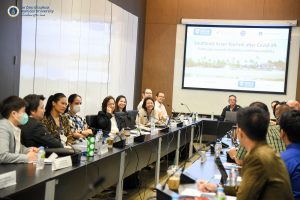
- Sign up to the WUN newsletter to get the latest stories about our members’ research, three times per year.
- Click here for a video summary of this project.
- Download individual country reports and condensed policy briefs . Each features case studies covering major tourist destinations in the region:
- Research on Myanmar was not possible due to the military coup in February 2021 and the continued state violence and civil unrest in the country. WUN funding enabled participation at the roundtable by colleagues from Mahidol University including the involvement of a Burmese Masters student. This researcher was able to make a meaningful contribution to the workshop, covering policies to best support the country.
- Read the synthesis report, COVID-19 AND THE TOURISM SECTOR IN SELECTED ASEAN COUNTRIES – Impacts, Responses and Roads to Recovery , which also covered five long-term adaptive strategies to address pre-COVID concerns and build a more sustainable and resilient tourism sector.
- Researchers are collaborating on an edited book and a co-authored journal article due for publication in 2024.
[1] The term “high-quality tourists” encompasses both higher-spending and more responsible tourists.

- Privacy Overview
- Strictly Necessary Cookies
This website uses cookies so that we can provide you with the best user experience possible. Cookie information is stored in your browser and performs functions such as recognising you when you return to our website and helping our team to understand which sections of the website you find most interesting and useful.
Strictly Necessary Cookie should be enabled at all times so that we can save your preferences for cookie settings.
If you disable this cookie, we will not be able to save your preferences. This means that every time you visit this website you will need to enable or disable cookies again.
- Search Please fill out this field.
- Newsletters
- Inspiration
- Sustainability
How Tourism Boards in Southeast Asia Have Been Turning to Sustainable Travel
:max_bytes(150000):strip_icc():format(webp)/mike_borobudur-5b6d3ea446e0fb0025fcb683.jpg)
It’s time to rethink travel with a lighter footstep in mind, which is why TripSavvy has partnered with Treehugger, a modern sustainability site that reaches more than 120 million readers each year, to identify the people, places, and things that are leading the charge in eco-friendly travel. Check out the 2021 Best of Green Awards for Sustainable Travel here .
For travel businesses across the Asia-Pacific region, the recent pandemic has been a solid punch to the gut. Stricter-than-average travel restrictions and severely constricted inbound flights have led to an 82 percent decrease in Asia-Pacific arrivals from January to October 2020, and equally devastating job losses and revenue downturns.
And yet a silver lining persists: Authorities believe the slowdown presents a once-in-a-lifetime opportunity to deconstruct the travel industry, “building back better” towards a more sustainable tourism model that delivers fairly to all stakeholders.
“Sustainability must no longer be a niche part of tourism, but must be the new norm for every part of our sector,” explains United Nations World Tourism Organization (UNWTO) secretary-general Zurab Pololikashvili . “It is in our hands to transform tourism and that emerging from COVID-19 becomes a turning point for sustainability.”
The response to this call has been as diverse as the region itself, from Thailand and the Philippines’ promotion of travel to the countries' peripheries to the Mekong Region’s support of sustainable travel businesses.
Paul Biris/Getty Images
Mekong Incubator Nurtures Sustainable Tourism Businesses
When it was originally conceived as a tourism business incubator four years ago, (Mekong Innovations in Sustainable Tourism (MIST) was tasked with helping startups around the Mekong River solve tourism problems unique to the subregion.
For example, 2018 winner BambooLao reduces single-plastic use in the Mekong by producing reusable bamboo straws for use in hotels and restaurants. Women in Lao village harvest and finish the dainty straws, packaging them in colorful recycled-paper containers.
“[BambooLao creates] job opportunities, protects the environment, and brings communities together,” says BambooLao founder Khoungkhakoune Arounothay . She used the $10,000 innovation grant provided by MIST to scale up production from one to three villages, increasing their capacity to meet growing international demand.
With the pandemic-induced downtown, MIST has expanded its scope to adapt. Instead of limiting its assistance to startups, MIST now accepts nominations for any operating business or project that drives sustainable tourism and resilience in the Mekong Subregion.
Contenders are expected to help solve a series of travel sustainability issues, including (but not limited to) regional connectivity between destinations in the Greater Mekong Subregion, better payments models throughout the travel value chain (B2C and B2B), enhanced customer experiences in travel and hospitality, reduced environmental impact, and solutions for overdevelopment and overtourism.
Finalists will be given exclusive access to hackathons and boot camps, and be exposed to a wider network of investors, mentors, incubators, government officials, and fellow businesses.
"Helping these innovative and passionate entrepreneurs to get exposure and mentorship is especially important for ventures in countries in the Mekong Region that normally don’t get as much attention," explains Jens Thraenhart , CEO of the Mekong Tourism Coordinating Office (MTCO) supervising MIST.
Some of the connections built by MIST winners can be surprisingly stratospheric. I Love Asia Tour ’s victory in 2017 attracted the attention of Facebook COO Sheryl Sandberg, who asked to meet the company’s CEO Nguyen Thi Huong Lien on her visit to Vietnam.
Nominations for 2021 contenders are currently being accepted until April 31, 2021. A jury taken from the Mekong Tourism Advisory Group and global venture capital fund Seedstars will judge the final pitches at a MIST Forum in Bangkok, scheduled for the second half of 2021.
Image courtesy of Turismo Pinoy
Farm Tourism Creates New Opportunities in the Philippines
Before 2020, Southeast Asia’s tourism spots were bursting at the seams. Popular tourist destinations like Boracay in the Philippines were shut down after degradation by excessive tourist activity.
Concerned about the cultural and environmental degradation brought about by overtourism—and given unexpected breathing space by tourism lockdowns—the Philippines’ Department of Tourism (DOT) has accelerated a longtime advocacy of its Secretary Bernadette Romulo-Puyat: farm tourism, the transformation of promising farms into tourist destinations.
Championed by Romulo-Puyat when she was still an undersecretary at the Department of Agriculture, farm tourism is designed to solve multiple issues in one fell swoop: relieving overtourism pressure by diverting tourism to the peripheries, expanding the Philippines’ tourism portfolio, and boosting the beleaguered agricultural sector.
“Farm tourism holds the promise of food sufficiency and additional income for tourism stakeholders, including farmers, farm workers and fisherfolk,” Romulo-Puyat explains . “Harnessed properly, it can be an important pillar for employment, productivity and ensuring sustainable livelihoods.”
So far, 105 farm tourism sites have been accredited by the DOT and provided with additional funding and training. One of the main beneficiaries is the municipality of Bauko: Its cool highland climate, scenic surroundings, and variety of farm-related activities have made this Mountain Province town a promising addition to the Philippines’ top tourist sights .
“In Bauko, we’ve combined farm tourism and eco-tourism,” explains Mylyn Maitang, an officer at the Bauko tourism office. “It’s a diverse municipality—in Upper Bauko, we focus on vegetable farms, fruit farms, strawberry farms. In Lower Bauko, we have rice terraces, and we're also selling locally-made products.”
Bauko is part of a bigger farm tourism circuit in Benguet and the Mountain Province. Visitors can visit mainstream locations like Baguio City, the Batad Rice Terraces , and Sagada before driving over to nearby Bauko and the surrounding municipalities of Abatan, Buguias, and La Trinidad. There, they can enjoy respective hiking trails, vegetable farms, strawberry fields, and handicraft centers.
Mylyn Maitang believes all the pieces are falling into place for a boom in sustainable tourism once the lockdowns end. “We have lots of requests that we can’t accommodate now because of restrictions, but we’re developing more programs beside farm tours,” Mylyn tells TripSavvy. “We already have two DOT-accredited homestays, with nine more in Lower Bauko soon—with Mount Data Hotel reopening, we’ll have plenty of room to stay in Bauko.”
For more on tourism in Bauko, Mountain Province, visit the municipality’s tourism page on Facebook.
Thirawatana Phaisalratana/Getty Images
In Thailand, Community Based Tourism Leads the Way
Thailand is in quite a bind. On one hand, tourism comprised 11 percent of the country’s GDP prior to 2020, a figure that dropped precipitously in the past year. On the other, overtourism has bedeviled Thailand’s top tourist sites ; the 2018 closure of Maya Bay was seen as a portent of things to come, if tourism was not managed in the years ahead.
Like the Philippines, Thailand is counting on the peripheries to save Thai tourism, giving community-based tourism (CBT) pride of place in its post-2021 tourism recovery plan.
CBT is tourism that goes to local grassroots: Visitors are taken to rural areas with a distinct, well-preserved culture, and given a hands-on experience of the local way of life. Participating communities benefit from tourism income that can be invested in local education, infrastructure, and healthcare; meanwhile, tourists are treated to an off-the-beaten path experience that can’t be beat in terms of authenticity and atmosphere.
The Designated Areas for Sustainable Tourism Administration (DASTA) is the Thai Kingdom's key driver in promoting sustainable tourism. The administration’s portfolio includes CBT projects in Koh Chang, Pattaya, Sukhothai, Loei, Nan, and Suphan Buri, with more projects planned for rural border communities.
In December 2020, the Thai government unveiled a model tour for future CBT plans , one based on existing canals and waterways. The model tour is located in Ratchaburi Province; its four stops— Chotikaram Temple, Jek Huat's house, Damnoen Saduak Floating Market , and Mae Thongyip Agricultural Garden—can all be explored by boat along a single route.
More CBT plans will be launched in the next year or so. "We will launch 40 community-based tourism packages that have passed through this program with the private sector," says DASTA’s director of community-based tourism development, Wanvipa Phanumat . "Hopefully, after the recent pandemic, there will be lots of domestic and international travelers coming... they will have the choices to go to the local communities that have been included in those packages."
In the meantime, more work needs to be done to upgrade CBT sites in Thailand—and “build back better” with sustainability in mind. “This crisis is a rare chance for the tourism industry to have a break and look back at... the important things that we need to do in terms of sustainable development,” says Wanvipa. “This is also a test for the community’s resilience and how they’re going to survive after the crisis.”
DASTA manages a comprehensive website where visitors can see all its projects in one place. To view DASTA’s community-based tourism destinations and find booking information for each spot, visit CBT Thailand's website .
WorldTourism Organization. " 2020: Worst Year in Tourism History with 1 Billion Fewer International Arrivals ." January 28, 2021.
Manila Bulletin. " DA, DOT to further boost farm tourism ." August 14, 2020.
Reuters. " Thailand's December tourist arrivals down 99.8% y/y to 6,500 ." January 25, 2021.
Related Articles
More related articles.
Fostering creative cities in South-East Asia: prioritizing creativity over tourism

As UNESCO recently announced on 2023 World Cities Day (31 October), 55 new cities around the world have just been named to the UNESCO Creative Cities Network (UCCN) for their strong commitment to harnessing culture and creativity in their sustainable development strategies, as well as for employing innovative practices in human-centred urban planning. With these latest additions to the UCCN, this distinguished circle now comprises 350 cities in more than 100 countries, each urban center recognized especially for one or more of seven creative fields—namely Crafts and Folk Art, Design, Film, Gastronomy, Literature, Media Arts, and Music.
UNESCO’s Creative Cities Network (UCCN) has been gaining considerable momentum in Asia-Pacific, with over 80 cities in the region currently named to the global network. South-East Asia, to take one example, is a region so rich in cultural diversity and traditions that its cities are arguably ideal candidates for participation in the Network. The growing creative economy of the region is also a notable, qualifying factor. Just about a week ago, eight more cities in South-East Asia joined the network, namely Battambang, Cambodia (Gastronomy); Chiang Rai, Thailand (Design); Da Lat , Viet Nam (Music); Hoi An , Viet Nam (Crafts and Folk Art); Iloilo City , The Philippines (Gastronomy); Ipoh , Malaysia (Music); Suphanburi, Thailand (Music); and Surakarta, Indonesia (Crafts and Folk Art).

What is the UNESCO Creative Cities Network?
The UNESCO Creative Cities Network is an international initiative that designates cities around the world as creative hubs in one or more various domains, namely crafts and folk art, design, film, gastronomy, literature, media arts, and music. The programme acknowledges the critical role of culture and creativity in sustainable urban development, and in fostering inclusive, safe and sustainable cities.
These Network cities recognize the potential for economic, social, and cultural growth by embracing creativity as a core component of their identity. An upcoming UNESCO policy paper, ‘The added value of the UNESCO Creative Cities Network at local, national and international level,’ testifies to the leading role played by cities towards the achievement of the 2030 Agenda, while demonstrating ways in which the Organization supports all UCCN members by fostering dialogue, peer-to-peer learning and collaboration.
While this initiative has the potential to significantly impact the Asia-Pacific region in many positive ways, it is essential for Asia’s governments to fully recognize the longterm benefits of prioritizing creativity over the more commonly favoured sector of tourism, and to demonstrate strong commitment in supporting their cities' creative endeavours.

Why ‘creativity over tourism’?
Tourism of course plays a significant role in the economic development of cities in South-East Asia, In Thailand, for example, from the years 2017 to 2020, or the immediate pre-pandemic period, tourism accounted for roughly 18 per cent of the country’s GDP, testifying to this sector’s significant contribution to the success of the national economy. Nevertheless—and without minimizing the importance of tourism to the economic health of regional countries—it is crucial to rethink the promotion of tourism over the cultivation of a country’s creative sector. Prioritizing creativity over tourism is not to undermine the importance of tourism, itself, but to acknowledge and build towards seizing the long-term benefits of investing in local creativity and the cultivation of a complete eco-system for Asia’s creative economy at both the city and provincial levels.
In 2021, UNESCO celebrated the International Year of Creative Economy for Sustainable Development, which helped to raise greater attention among governments and the private sector to how the creative economy now contributes 3 per cent of the global GDP. Creativity is a renewable, sustainable, limitless resource which can be found anywhere around the world, and as the world contends with the climate crisis while emerging from the COVID-19 pandemic, it is more important than ever that development be human-centric, inclusive, and sustainable.

The development of this more complete ‘eco-system’ of the creative economy and the tourism sector entails a number of initiatives:
- Diversification of the Economy: Focusing on creativity allows cities to diversify their economies, reducing dependency on tourism as the sole revenue source. This diversification provides stability, especially during unforeseen events like the global COVID-19 pandemic, which drastically impacted the tourism industry. A creative city can continue to generate income and thrive in various sectors even during challenging times.
- Preservation of Local Culture: Embracing creativity can help preserve and promote local cultural heritage, which often gets diluted by catering primarily to tourists' preferences. A strong creative commitment ensures that local traditions, crafts, and art forms are not only sustained but also celebrated, leading to a richer cultural experience for residents and visitors alike.
- Nurturing of Talent and Innovation: Prioritizing creativity encourages the nurturing of local talent and innovation especially the lives of cultural and creative practitioners in the city. It provides opportunities for artists, designers, entrepreneurs, and other creative professionals to thrive, ultimately leading to the emergence of a vibrant and dynamic creative ecosystem. It also invites artists to move to the city and bring more livelihoods to the communities themselves.

Towards a strong commitment by local governments
For the UNESCO Creative Cities Network to flourish in South-East Asia, it is essential for local governments to demonstrate a strong commitment to supporting creativity. This commitment should be manifested in various ways:
- Funding and Resources: Local governments should allocate sufficient funding and resources to creative projects, initiatives, and organizations. Investing in the creative sector is an investment in the city's future.
- Infrastructure and Facilities: The development of creative spaces, cultural centres, and art schools can provide a nurturing environment for artists and creative professionals. Local governments should prioritize the creation of such infrastructure.
- Education and Training: Promoting a greater understanding of creativity’s economic and developmental benefits begins in schools and universities. Local governments can support creative education by integrating it into the curriculum and providing scholarships or grants for students pursuing creative fields.
- Collaboration and Promotion: Collaboration between the public and private sectors, as well as with local communities, is vital for the success of the UNESCO Creative City Network. Local governments should actively promote collaboration and provide platforms for creative individuals and businesses to thrive.
- Fostering of artistic freedom of expression: National, regional, and local governments, along with the private sector, should advocate freedom of expression in keeping with the UNESCO 2005 Convention on the Protection and Promotion of the Diversity of Cultural Expressions.

The UNESCO Creative Cities Network in South-East Asia has the potential to be a transformative force, shaping cities that prioritize creativity over tourism. Strong commitment by local governments is the cornerstone of this transformation, as such commitment ensures that creativity is not just a buzzword, but a way of life. By investing in creativity, cities can unlock their full potential, creating vibrant, dynamic, and sustainable communities that celebrate their unique cultures while embracing the future.
For more information: https://www.unesco.org/en/creative-cities
#CreativeCities
More from UNESCO Bangkok
Related items.
- Creative cities
- Region: Asia and the Pacific
- UNESCO Office in Bangkok and Regional Bureau for Education
- SDG: SDG 11 - Make cities and human settlements inclusive, safe, resilient and sustainable
- See more add
About the authors
Kamonrat Mali Chayamarit has been with UNESCO Bangkok since 2008 and currently specializes as a Culture Programme Officer in the Culture Unit assisting the State Party of Lao PDR in implementing various UNESCO Conventions ratified by the country. She works across heritage disciplines in regional cultural and intangible cultural heritage; cultural and creative industries; world heritage; and the illicit trafficking of heritage. Kamonrat holds a Master’s degree in Cultural and Creative Industries from King’s College London; a post-graduate Diploma in comparative studies in cultures from the Department of Anthropology and Sociology, School of Oriental and Asian Studies (SOAS), University of London; and a Bachelor’s degree from the Faculty of Arts at Chulalongkorn University, Bangkok.
This article is related to the United Nation’s Sustainable Development Goals .

Other recent idea


Asia Foundation hosts regional workshop on sustainable and inclusive cultural tourism
The event was held in indonesia to address the critical need for more sustainable and inclusive tourism.
The Asia Foundation teamed up with the US Embassy in Indonesia and Universitas Gajah Mada to host this year’s Young Southeast Asian Leadership Initiative (YSEALI) Regional Workshop on Sustainable and Inclusive Cultural Tourism.
Held last month, the workshop brought together 60 young leaders from ten Southeast Asian countries to address the critical need for more sustainable and inclusive tourism.
The workshop emphasised how study and network development in sustainable and inclusive tourism bridges cultural divides, empowers communities and preserves heritage.
Empowerment through cooperative effort
Likewise, the YSEALI program empowers young individuals to enhance their soft skills and leadership abilities, equipping them with the tools to take on influential roles in the community.
By empowering young leaders and fostering collaboration between ASEAN nations and the United States, the workshop is paving the way for a more inclusive and sustainable tourism industry.
As these young leaders apply their knowledge, they are transforming the tourism landscape to become a powerful force for positive change, cultural preservation, and sustainable development across the region.
An immersive learning experience
According to Jason P Rebholz, counsellor for public diplomacy for the US Mission to Indonesia: “Southeast Asia is a region rich in culture, tradition, and culinary experiences that offer valuable opportunities for connection with the United States and the global community.”
Rebholz explained how the event enabled participants to learn from each other, share expertise, and empower each other for the future of sustainable and inclusive cultural tourism within the region.
He added: “We were delighted to have all the participants join us today to discuss sustainable and inclusive cultural tourism, which was an important issue in the region.”
Seoul Art Week goes on this September
Australia’s Northern Territory introduces new immersive indigenous experience…
AYANA Bali’s museum hailed among World’s Greatest Places
Bhutan to boost tourism via first international film festival
Since you're here...
...there are many ways you can work with us to advertise your company and connect to your customers. Our team can help you design and create an advertising campaign
We can also organize a real life or digital event for you and find thought leader speakers as well as industry leaders, who could be your potential partners, to join the event. We also run some awards programmes which give you an opportunity to be recognized for your achievements during the year and you can join this as a participant or a sponsor.
Let us help you drive your business forward with a good partnership!
Yes, contact me I want to download the media kit
Comments are closed.
LATEST STORIES

Viking announces new itineraries in Asia for 2025

Marriott International appoints general manager for Khao Lak Marriott Beach Resort & Spa

Tahiti’s Air Moana chooses Maxamation’s Aviator revenue management solution

Greg Cormier is new chief marketing officer for Aurora Expeditions
Welcome, Login to your account.
Sign in with Google
Powered by wp-glogin.com
Recover your password.
A password will be e-mailed to you.
Welcome back, Log in to your account.
SIGN UP FOR FREE
Be part of our community of seasoned travel and hospitality industry professionals from all over the world.
- LOGIN / SIGN UP
- Middle East
- UK & Europe
- USA & Canada
- Annual & Interim Reports
- Hospitality
- HR & Careers
- Luxury Travel
- MICE (Meetings, Incentives, Conferencing, Exhibitions)
- Travel Agents
- Airlines / Airports
- Conferences
- Cruising (Ocean)
- Cruising (River)
- Destination Management (DMC)
- Hotels & Resorts
- Hotel Management Company
- HR / Appointments
- Meetings, Incentives, Conferencing, Exhibitions (MICE)
- Travel Agents (all)
- Tech – Travel
- Tech – Hotels
- Tourism Boards
- Global Leaders and Csuite
- Executive Women Series
- Executive Hoteliers
- SEAHIS 2024
- Destination Soundbites
- Industry appointments
- Travel Bloggers
- Podcasts – Features
- How to join
- RSVP Portal
- Event Photos/Videos
- Competitions
- Travel Club
- Middle East – 19Sep
- Thailand – 17Oct
- Malaysia – 21Nov
- Asia – 26Nov
- Hong Kong – 23Jan
- Destination NaJomtien BanAmphur BangSaray *NEW*
- จุดหมายปลายทาง นาจอมเทียน หาดบ้านอำเภอ บางเสร่ *NEW*
- South Australia Reward Wonders *NEW*
- Ponant Yacht Cruises and Expeditions
- Encore Tickets (Chinese Guide)
- Affordable Luxury in Thailand by Centara Hotels
- Rising Above the Oridinary by Conrad Bangkok
- The Best of Thailand
- Who is IWTA
- Philippines
- Recommend Someone
- Recommend yourself
- IWTA Awards
- Advertise with us
- 2024 Media Kit
- Gary (Founder/CEO)
- Chris (GM & Managing Editor)
- Kanchan (Snr Editor)
- Marga (Editor)
- Megha (Freelance Editor)
- Charmaine (Freelance Editor)
- Philipp (Freelance Editor)
- Mark (Freelance Editor)
- Anthony (Sales)
- Paul (Sales)
- Upload your Travel Blog
- Upload your Event

Plan Your Trip
- 01 Fill in details ranging from your desired experience to the amount of people you are traveling with.
- 02 Based on your answers, discover destinations and experiences tailored to you.
- 03 Explore each suggestion
Follow the step by step with what you would like to experience for your next trip through the following 4 questions.
Quick Links
- Intra-ASEAN Tourism Toolkit Download
- Tourism Packages
- Guidelines on Self-Drive
- Facts & Planning
- Visa & Immigration
- Suggested Itineraries
- Download Video
- Download Logo
- A Destination For Every Dream
Stay updated on Covid-19 in Southeast Asia. For more information, click here .
Home About Press & Trade
ASEAN Recognises Its Best Sustainable Tourism Products
Published on February 1, 2018
PRESS RELEASE FOR IMMEDIATE DISTRIBUTION 30 January 2018
Seventeen winners in rural and urban products category in nine Southeast Asian countries have been awarded for sustainable tourism excellence
CHIANG MAI, THAILAND – Seventeen winners of the inaugural ASEAN Sustainable Tourism Awards (ASTA) received recognition at a dedicated awards event at the end of the ASEAN Tourism Forum, 26 January in Chiang Mai, northern Thailand.
The new awards will now take place every two years as partial fulfilment of the ASEAN Tourism Strategic Plan 2016-2025, much of which seeks to advance sustainable tourism objectives.
The nine winners in the Rural Sustainable Products category were Sothy’s Pepper Farm in Cambodia, Desa Wisata Nglanggeran in Indonesia, Tree Top Explorer in Lao PDR, KOPEL Kinabatangan Wildlife Corridor in Malaysia, the Pindaya Region in Myanmar, Walk on the Wild Side in the Philippines, Kranji Countryside in Singapore, the Kao Yao Noi Community Based Ecotourism Club in Thailand, and the Stay with Tay Ethnic Village in Viet Nam.
The eight winners in the Urban Sustainable Products category were Wat Phnom Historical and Cultural Site in Cambodia, the Nusa Dua in Indonesia, Phousi Mountain in Lao PDR, the KL Forest Eco Park by KL Tower in Malaysia, the Kayin State’s Natural Limestone Caves in Myanmar, the Palina Greenbelt River Cruise Experience in the Philippines, the Marina Bay Precinct in Singapore, and the Phuket Natural Experience in Thailand.
“I congratulate all 17 ASTA recipients,” said Mr. Sounh Manivong, the Director General of Tourism Marketing in the Lao PDR Government. “I encourage tourists to experience these products first hand. They are all shining examples of sustainable tourism in Southeast Asia.”
Entries to the awards were assessed by the National Tourism Organization in each ASEAN member state. Judging criteria and scoring was standardised throughout the nine ASEAN countries that participated. Auditors took inspection visits to all short-listed sites.
For more information about ASTA and its awardees, please click here .
The next ASTA will take place at ATF in Brunei Darussalam in 2020.
Further Information www.aseantourism.travel
ASEAN Tourism Competitiveness Committee [email protected]
ASEAN Secretariat [email protected]
Related Posts
Joint media statement.

A DESTINATION FOR EVERY DREAM: ASEAN COUNTRIES MAKE FORBES’ “WORLD’S 50 MOST BEAUTIFUL COUNTRIES” LIST
Asean tourism ministers stir the pot for gastro tourism in southeast asia for 2018, covid-19 information & statement.

Tourism Recovery Uneven Across SE Asia

Two years after world tourism descended into suspended animation because of the COVID-19 pandemic , the gradual removal of quarantine and travel restrictions across Southeast Asia is now precipitating the reawakening of tourism in the region.
As reported by Beritabali.com and Suara.com, while tourism is certainly on the rebound, the recovery process will not happen on a uniform basis across the region.
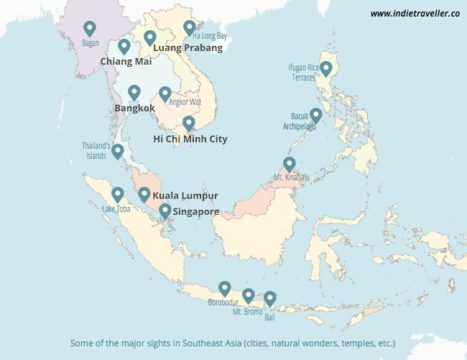
Data provided by the travel company ForwardKeys, says international air transportation bookings in Southeast Asia at the end of March 2022 were at a level of 38% of what they were in the pre-pandemic period. At the same time, a sharp increase in new bookings has taken place over the past three months, particularly in Singapore and the Philippines.
The Minister of Tourism for the Philippines , Bernadette Romulo-Puyat, says her country is leading the travel revival because “We were the first to cut all the bureaucracy.”
“Tourists enjoy this lack of bureaucracy because once they arrive in the country, they are free to go,” said Romulo-Puyat.
Meanwhile, many countries in Southeast Asia have opened their tourism borders for travelers who can prove they are fully vaccinated.
Many Southeast Asian destinations, such as Indonesia, only require travelers to undertake a rapid antigen test before arrival and upon arrival.
A few countries continue to apply stricter entry restrictions, such as Thailand, a leading tourism destination in the region, before the pandemic. In Thailand, international visitors are still subjected to bureaucratic rules. ForwardKeys reports that flight bookings to Singapore and the Philippines are 72% and 65% of 2019 levels, respectively, while Thailand bookings are only 24% of what they were in 2019.
Marisa Sukosol Nunbhakdi, president of the Thailand Hotel Association, says: “The PCR test (in Thailand) can cost 2,000 – 2,500 baht (around Rp. 850,000 to Rp. 1 million) and the bureaucracy can sometimes be complicated.”
Marisa said Thailand’s current rules and regulations are seen as obstacles to travel by many travelers. Adding: “If other countries do not impose complicated entry requirements, travelers prefer to go to those places that are more relaxed.”
The Governor of Thailand’s Central Bank, Sethaput Suthiwartnarueput, said, speaking on Monday, 11 April 2022: “Thailand will need time until 2026 to recover fully.”
In 2019, the tourism sector contributed 12% of Thailand’s Gross Domestic Product (PDB).
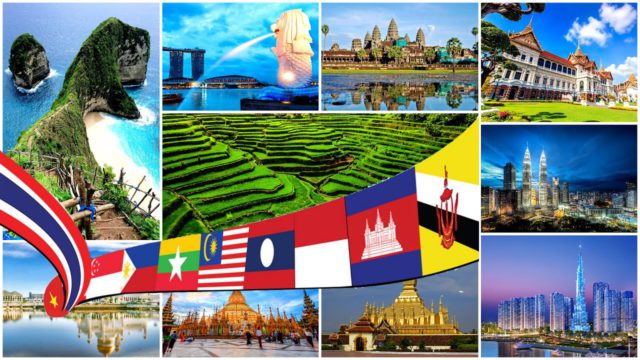
As Southeast Asia recovers, the once prominent Chinese traveler has largely disappeared in the current revival. Before the pandemic, travelers from the PRC represented the overwhelmingly dominant source market for Southeast Asian travel. However, at this time, China’s travel sector remains in an almost virtual shutdown.
In 2019, more than one-quarter of the 40 million international tourists traveling to Thailand came from the PRC. Meanwhile, Thailand is only targeting in 2022 a modest 5 to 10 million international visitors, mainly from Malaysia and other neighboring Southeast Asian countries.
MarketKeys says that for Southeast Asia as a whole, 30% of foreign tourists in 2022 are anticipated to originate from Europe. If this market share is realized, it will be an increase from 2019, when 22% of all visitors to the regions came from Europe. Similarly, the American market segment of travelers to Southeast Asia is projected to hit 21% in 2022, up dramatically from the 9% American market share in 2019.
Showing the impact of the diminished PRC market, ForwardKeys predicts in 2022, only 24% of all travelers in Southeast Asia will be from Asia, a figure less than half of the 57% Asian market share experienced in 2019.
Figures from the World Travel & Tourism Council say the tourism sector contributed US$ 380.6 billion to the gross domestic product (PDB) of Southeast Asia in 2019, an amount roughly equal to 11.8% of the total PDB for the region.
- Email this article
- Print this article
J. M. Daniels
https://balidiscovery.com
Related posts

Luhut: Lower Domestic Airfares to Bali

VOA Available to Timor-Leste Travelers
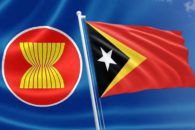
Timor-Leste Accepted into ASEAN Membership

A Corridor for Southeast Asian Travel
- Airliners.net
- Civil Aviation
Aeroflot seeks to capitalize on Moscow as sixth-freedom hub
Moderators: richierich , ua900 , PanAm_DC10 , hOMSaR

Aeroflot seeks to capitalize on Moscow as sixth-freedom hub #20700719
User_mini_profile.
- Posts: 796
- Joined: Tue Feb 27, 2018 1:46 pm
- USER_STATUS: OFF_LINE
Re: Aeroflot seeks to capitalize on Moscow as sixth-freedom hub #20700725
Maverickm11.
- Posts: 19264
- Joined: Thu Apr 06, 2000 1:59 pm
Re: Aeroflot seeks to capitalize on Moscow as sixth-freedom hub #20700731
- Posts: 711
- Joined: Fri Jul 31, 2009 1:54 am

Re: Aeroflot seeks to capitalize on Moscow as sixth-freedom hub #20700733
- Posts: 3087
- Joined: Wed Oct 16, 2013 9:36 pm
Re: Aeroflot seeks to capitalize on Moscow as sixth-freedom hub #20700737
- Posts: 3607
- Joined: Mon Sep 08, 2003 6:08 am
Re: Aeroflot seeks to capitalize on Moscow as sixth-freedom hub #20700747
MaverickM11 wrote: Uh....duh? What do they think SU has been doing up until now selling Europe-Asia at fire-sale prices?
- Posts: 6198
- Joined: Wed Oct 03, 2012 8:32 pm
Re: Aeroflot seeks to capitalize on Moscow as sixth-freedom hub #20700851
Matt6461 wrote: Does anyone know, btw, whether Aeroflot pays the same high fees for overflying Siberia? .
- Posts: 449
- Joined: Thu Jun 23, 2016 9:26 pm

Re: Aeroflot seeks to capitalize on Moscow as sixth-freedom hub #20700921
konkret wrote: Matt6461 wrote: Does anyone know, btw, whether Aeroflot pays the same high fees for overflying Siberia? .
- Posts: 13365
- Joined: Sat Nov 03, 2007 1:25 am
Re: Aeroflot seeks to capitalize on Moscow as sixth-freedom hub #20700953
- Posts: 967
- Joined: Mon Jan 18, 2010 6:33 am
Re: Aeroflot seeks to capitalize on Moscow as sixth-freedom hub #20700967

Re: Aeroflot seeks to capitalize on Moscow as sixth-freedom hub #20700979
- Rank: Moderator
- Posts: 24935
- Joined: Wed Jan 19, 2005 10:55 pm

Re: Aeroflot seeks to capitalize on Moscow as sixth-freedom hub #20701009
- Posts: 1436
- Joined: Fri Mar 10, 2017 10:20 am
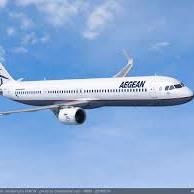
Re: Aeroflot seeks to capitalize on Moscow as sixth-freedom hub #20701011
- Posts: 1991
- Joined: Fri May 20, 2016 6:18 am
Re: Aeroflot seeks to capitalize on Moscow as sixth-freedom hub #20701015
Re: aeroflot seeks to capitalize on moscow as sixth-freedom hub #20701045.
lightsaber wrote: Moscow needs more capacity to have one major airport the hub. I see the OP article is subscriber only. I'm guessing this is the SVO expansion?

Re: Aeroflot seeks to capitalize on Moscow as sixth-freedom hub #20701159
- Posts: 1248
- Joined: Fri Oct 21, 2016 11:47 am
Re: Aeroflot seeks to capitalize on Moscow as sixth-freedom hub #20701243
SCQ83 wrote: For instance Nordwind flies from SVO, but they could always move them to other airport if Aeroflot needs space. Nordwind's subsidiary PegasFly is already based in ZIA.
- Posts: 41
- Joined: Tue Jul 22, 2014 7:45 pm
Re: Aeroflot seeks to capitalize on Moscow as sixth-freedom hub #20701271
MoKa777 wrote: Also, the airline and/or airport staff will need to manage any racist tendencies to avoid an incident like the one that occured recently with the American/Indian pax transiting Moscow...
Re: Aeroflot seeks to capitalize on Moscow as sixth-freedom hub #20701285
- Posts: 4207
- Joined: Wed Jan 16, 2008 7:45 am
- USER_STATUS: Online
Re: Aeroflot seeks to capitalize on Moscow as sixth-freedom hub #20701297
- Posts: 467
- Joined: Fri Apr 28, 2017 9:05 pm
Re: Aeroflot seeks to capitalize on Moscow as sixth-freedom hub #20701381
Matt6461 wrote: it's tough to invest billions building out that network when your government's bellicosity and trollishness can get you shut out of trade.
- Posts: 663
- Joined: Tue Jun 30, 2009 3:20 am
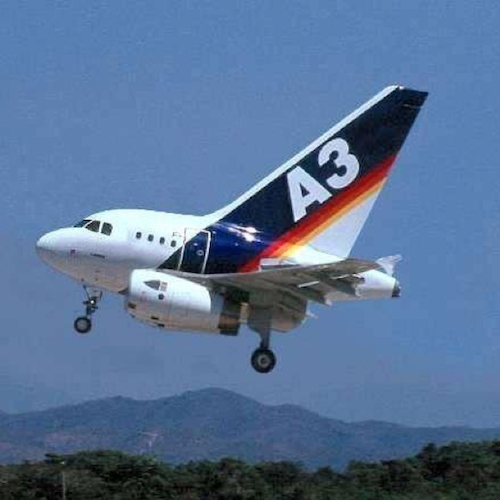
Re: Aeroflot seeks to capitalize on Moscow as sixth-freedom hub #20701389
- Posts: 581
- Joined: Mon Nov 14, 2016 9:21 pm

Re: Aeroflot seeks to capitalize on Moscow as sixth-freedom hub #20701405
- Posts: 10410
- Joined: Fri Feb 22, 2008 7:15 pm
Re: Aeroflot seeks to capitalize on Moscow as sixth-freedom hub #20701415
rutankrd wrote: stops in the tundra (Novosibirsk)
rutankrd wrote: Putin and Xi Jinping combined have a plan and it’s not expanding genuine liberal democracy that’s for sure.
Re: Aeroflot seeks to capitalize on Moscow as sixth-freedom hub #20701449
Re: aeroflot seeks to capitalize on moscow as sixth-freedom hub #20701457.
Dutchy wrote: How does that work? Money paid by foreign airlines goes directly into the pocket of Aeroflot, not the Russian government (or Oligarchs if you will)? This does seem strange to me, normally a privet airline should not benefit from this, this should be a government matter.
Re: Aeroflot seeks to capitalize on Moscow as sixth-freedom hub #20701483
Galwayman wrote: MoKa777 wrote: Also, the airline and/or airport staff will need to manage any racist tendencies to avoid an incident like the one that occured recently with the American/Indian pax transiting Moscow...
- Posts: 620
- Joined: Mon Nov 02, 2015 10:24 am
Re: Aeroflot seeks to capitalize on Moscow as sixth-freedom hub #20701503
BREECH wrote: Oligarchs are not government. Gosh, will westerers EVER understand as much about Russia as they talk about it?
Re: Aeroflot seeks to capitalize on Moscow as sixth-freedom hub #20701603
BREECH wrote: Dutchy wrote: How does that work? Money paid by foreign airlines goes directly into the pocket of Aeroflot, not the Russian government (or Oligarchs if you will)? This does seem strange to me, normally a privet airline should not benefit from this, this should be a government matter.
Re: Aeroflot seeks to capitalize on Moscow as sixth-freedom hub #20701649
enilria wrote: MaverickM11 wrote: Uh....duh? What do they think SU has been doing up until now selling Europe-Asia at fire-sale prices?
zakuivcustom
- Posts: 3991
- Joined: Sat Jun 10, 2017 3:32 am
Re: Aeroflot seeks to capitalize on Moscow as sixth-freedom hub #20701665
Re: aeroflot seeks to capitalize on moscow as sixth-freedom hub #20701667.
- Posts: 425
- Joined: Fri Nov 09, 2007 1:16 pm
Re: Aeroflot seeks to capitalize on Moscow as sixth-freedom hub #20701725
Dutchy wrote: Leaving politics aside. Strange that this arrangement still exists. Must be a great source of income for Aeroflot. $US 600million is quite a lot, since their profit was RUR40 bln in 2017, a whopping 90% of the profit was a result from this "mistake" since they haven't got to do anything for this.
Re: Aeroflot seeks to capitalize on Moscow as sixth-freedom hub #20701989
- Posts: 580
- Joined: Sat Apr 12, 2014 6:13 am
Re: Aeroflot seeks to capitalize on Moscow as sixth-freedom hub #20702013
alan3 wrote: Chinese airlines get a lot of West Coast to India traffic through PVG and CAN. Those flights are usually the cheapest way. Wonder if the same could eventually happen through Moscow from the East Coast? From YVR, for example, it seems that a solid quarter of CZ's YVR-CAN pax are Indians in transit. (Of course, SU needs to start flying to YYZ first, but if the price is lower than connecting through ME3 or Europe, believe me, there will be a market for it)
Re: Aeroflot seeks to capitalize on Moscow as sixth-freedom hub #20702105
Spongenotbob.
- Posts: 17
- Joined: Wed Mar 12, 2014 6:40 am
Re: Aeroflot seeks to capitalize on Moscow as sixth-freedom hub #20702139
- Posts: 490
- Joined: Sun Oct 01, 2017 2:08 am
Re: Aeroflot seeks to capitalize on Moscow as sixth-freedom hub #20702167
zakuivcustom wrote: you can do something like fly into CAN, leave the airport, and ride the train to HK (at least AFAIK...).
- Posts: 60
- Joined: Fri Jun 09, 2017 7:42 pm
Re: Aeroflot seeks to capitalize on Moscow as sixth-freedom hub #20702195
gtargui wrote: Unfortunately you can't. Once you cross the "boundary" you get an exit stamp and have left what we all regard as "China" and would need a new visa to cross back again. Saying that, depending on which city you enter Mainland China via, you can do anything from stay in the city for 24 hours to tour three provinces for 144 hours which is a great option if you can convince staff at your origin airport that it actually exists.
Re: Aeroflot seeks to capitalize on Moscow as sixth-freedom hub #20702265
zakuivcustom wrote: gtargui wrote: Unfortunately you can't. Once you cross the "boundary" you get an exit stamp and have left what we all regard as "China" and would need a new visa to cross back again. Saying that, depending on which city you enter Mainland China via, you can do anything from stay in the city for 24 hours to tour three provinces for 144 hours which is a great option if you can convince staff at your origin airport that it actually exists.
Re: Aeroflot seeks to capitalize on Moscow as sixth-freedom hub #20702781
- Posts: 552
- Joined: Fri Aug 07, 2009 10:28 pm
Re: Aeroflot seeks to capitalize on Moscow as sixth-freedom hub #20702901
Re: aeroflot seeks to capitalize on moscow as sixth-freedom hub #20703167.
Galwayman wrote: They need several more hub banks to make it work really really well and an aircraft like the A321LR for the flexibility And they also need the long discuss 72 hour transit visa for EU nationals
- Posts: 492
- Joined: Wed Aug 05, 2015 2:10 pm
Re: Aeroflot seeks to capitalize on Moscow as sixth-freedom hub #20703179
Matt6461 wrote: If Aeroflot had a really ambitious vision for 6th-freedom expansion they'd be ordering the A321LR and pushing for the A321XLR. http://www.gcmap.com/mapui?R=4000nm%40s ... 00nm%40svo The two ranges are 3500nm@SVO (A321LR practical range) and 4000nm@SVO (A321XLR practical range). The LR opens all of India and most of China; the XLR opens pretty much all of Asia. Either plane creates innumerable 1-stop itineraries where only 2-stop exist now. (Secondary/tertiary Europe to secondary/tertiary China/Asia). Big cities like KMG, XIY, CGO, Dalian, WUH, TAO, SHE, HRB, NKG etc. should easily fill an A321LR, especially with another few years of growth.
Re: Aeroflot seeks to capitalize on Moscow as sixth-freedom hub #20703241
WorldFlier wrote: I think the World Cup proved to the Byzantine Russian government that allowing visa-free (basically) will result in >99.99% of people returning to their home country*. I wouldn't be shocked if visa-free becomes a reality for non-poor countries. *Number made up, but I haven't heard anything from Russia bout masses of people overstaying visas from the World Cup
- Page 1 of 1
- Dropdown header
- Helicopter Discussion Forum
- Travel, Polls & Preferences
- Technical/Operations
- Aviation Hobby
- Aviation Photography
- Photography Feedback
- Trip Reports
- Military Aviation & Space Flight
- Non-Aviation
- Site Related
Users browsing this forum: 24Whiskey , 747classic , abreyu , airindia787 , AmricanShamrok , ANA787 , Aresxerexade , AVENSAB727 , avtcle , B6SpiritofEWR , bnatraveler , bostrv , bridge29 , Bryson , DaBluBoi , DartHerald , DeSpringbokke , diatraveler , dmcreif , enapace , flyguychi , Google Adsense [Bot] , Heavierthanair , iflykpdx , Jimothy , Jmanzo1 , jplatts , Kikko19 , LAOCA , LAXdude1023 , LAXPolaris , LIPZ , mach86 , meh130 , MoreLegRoomPLS , N0dak , NightMaher , NZdsgnr , Oslim540 , pbm , PIF28 , PM , PW100 , rj777 , sfoflyguy , skyymarc , SwissCanuck , Tailwinds13 , william , ZuluTime and 404 guests
- Aviation Forums
Now boarding: Faces, places, and trends shaping tourism in 2024
After falling by 75 percent in 2020, travel is on its way to a full recovery by the end of 2024. Domestic travel is expected to grow 3 percent annually and reach 19 billion lodging nights per year by 2030. 1 Unless otherwise noted, the source for all data and projections is Oxford Economics. Over the same time frame, international travel should likewise ramp up to its historical average of nine billion nights. Spending on travel is expected to follow a similar trajectory, with an estimated $8.6 trillion in traveler outlays in 2024, representing roughly 9 percent of this year’s global GDP.
About the authors
This article is a collaborative effort by Caroline Tufft , Margaux Constantin , Matteo Pacca , and Ryan Mann , with Ivan Gladstone and Jasperina de Vries, representing views from McKinsey’s Travel, Logistics & Infrastructure Practice.
There’s no doubt people still love to travel and will continue to seek new experiences in new places. But where will travelers come from, and where will they go? We developed a snapshot of current traveler flows, along with estimates for growth through 2030. For the purposes of this report, we have divided the world into four regions—the Americas, Asia, Europe, and the Middle East and Africa.
Our analysis identifies three major themes for industry stakeholders to consider:
- The bulk of travel spending is close to home. Stakeholders should ensure they capture the full potential of domestic travel before shifting their focus to international travelers. And they should start with international travelers who visit nearby countries—as intraregional trips represent the largest travel segment after domestic trips.
- Source markets are shifting. Although established source markets continue to anchor global travel, Eastern Europe, India, and Southeast Asia are all becoming fast-growing sources of outbound tourism.
- The destinations of the future may not be the ones you imagine. Alongside enduring favorites, places that weren’t on many tourists’ maps are finding clever ways to lure international travelers and establish themselves as desirable destinations.
The bulk of travel spending is close to home
International travel might feel more glamorous, but tourism players should not forget that domestic travel still represents the bulk of the market, accounting for 75 percent of global travel spending (Exhibit 1). Domestic travel recovered from the COVID-19 pandemic faster than international travel, as is typical coming out of downturns. And although there has been a recent boom in “revenge travel,” with travelers prioritizing international trips that were delayed by the pandemic, a return to prepandemic norms, in which domestic travel represents 70 percent of spending, is expected by 2030.
The United States is the world’s largest domestic travel market at $1 trillion in annual spending. Sixty-eight percent of all trips that start in the United States remain within its borders. Domestic demand has softened slightly, as American travelers return abroad. 2 Dawit Habtemariam, “Domestic U.S. tourism growth levels off as Americans head overseas,” Skift, August 18, 2023. But tourism players with the right offerings are still thriving: five national parks broke attendance records in 2023 (including Joshua Tree National Park, which capitalized on growing interest from stargazers indulging in “dark sky” tourism 3 Scott McConkey, “5 national parks set attendance records in 2023, and the reasons may surprise you,” Wealth of Geeks, April 16, 2024. ).
China’s $744 billion domestic travel market is currently the world’s second largest. Chinese travelers spent the pandemic learning to appreciate the diversity of experiences on offer within their own country. Even as borders open back up, Chinese travelers are staying close to home. And domestic destinations are benefiting: for example, Changchun (home to the Changchun Ice and Snow Festival) realized 160 percent year-on-year growth in visitors in 2023. 4 Shi Xiaoji, “Why don’t Chinese people like to travel abroad anymore? The global tourism industry has lost 900 billion yuan. What is the situation?,” NetEase, February 12, 2024. In 2024, domestic travel during Lunar New Year exceeded prepandemic levels by 19 percent.
China’s domestic travel market is expected to grow 12 percent annually and overtake the United States’ to become the world’s largest by 2030. Hotel construction reflects this expectation: 30 percent of the global hotel construction pipeline is currently concentrated in China. The pipeline is heavily skewed toward luxury properties, with more than twice as many luxury hotels under construction in China as in the United States.
India, currently the world’s sixth-largest domestic travel market by spending, is another thriving area for domestic travel. With the subcontinent’s growing middle class powering travel spending growth of roughly 9 percent per year, India’s domestic market could overtake Japan’s and Mexico’s to become the world’s fourth largest by 2030. Domestic air passenger traffic in India is projected to double by 2030, 5 Murali Krishnan, “Can India’s airports cope with rapid passenger growth?,” Deutsche Welle, February 7, 2024. boosted in part by a state-subsidized initiative that aims to connect underserved domestic airports. 6 “India is seeing a massive aviation boom,” Economist , November 23, 2023.
When travelers do go abroad, they often stay close to home (Exhibit 2).
Europe and Asia, in particular, demonstrate strong and growing intraregional travel markets.
Recognizing this general trend, stakeholders have been funneling investment toward regional tourism destinations. An Emirati wealth fund, for instance, has announced its intent to invest roughly $35 billion into established hospitality properties and development opportunities in Egypt. 7 Michael Gunn and Mirette Magdy, “UAE’s $35 billion Egypt deal marks Gulf powers’ buying spree,” Bloomberg, April 27, 2024.
Europe has long played host to a high share of intraregional travel. Seventy percent of its travelers’ international trips stay within the region. Europe’s most popular destinations for intraregional travelers are perennial warm-weather favorites—Spain (18 percent), Italy (10 percent), and France (8 percent)—with limited change to these preferences expected between now and 2030.
Despite longer travel distances between Asian countries, Asia’s intraregional travel market is beginning to resemble Europe’s. Intraregional travel currently accounts for about 60 percent of international trips in Asia—a share expected to climb to 64 percent by 2030. As in Europe in past decades, Asian intraregional travel is benefiting from diminishing visa barriers and the development of a low-cost, regional flight network.
Thailand is projected to enjoy continued, growing popularity with Asian travelers. Thailand waived visa requirements for Chinese tourists in 2023 and plans to do the same for Indian tourists starting in 2024. It has aggressively targeted the fast-growing Indian traveler segment, launching more than 50 marketing campaigns directed at Indians over the past decade. The investment may be paying off: Bangkok recently overtook Dubai as the most popular city destination for Indian tourists. 8 “Bangkok overtakes Dubai as top destination for Indians post visa relaxation, reveals Agoda,” PR Newswire, January 18, 2024.
A McKinsey ConsumerWise survey on consumer sentiment, conducted in February 2024, suggests that Chinese travelers are also exhibiting high interest in international travel, with 36 percent of survey respondents indicating that they intend to spend more on international travel in the next three months. 9 Daniel Zipser, “ China brief: Consumers are spending again (outside of China) ,” McKinsey, April 8, 2024. Much of this interest is directed toward regional destinations such as Southeast Asia and Japan, with interest in travel to Europe down from previous years. 10 Guang Chen, Zi Chen, Steve Saxon, and Jackey Yu, “ Outlook for China tourism 2023: Light at the end of the tunnel ,” McKinsey, May 9, 2023.
Given travelers’ preference for proximity, how can tourism stakeholders further capitalize on domestic and intraregional travel demand? Here are a few strategies:
- Craft offerings that encourage domestic tourists to rediscover local gems. Destinations, hotels, and transportation providers can encourage domestic tourists to integrate lesser-known cultural landmarks into their trips to visit friends and relatives. In France, the upscale hotel chain Relais & Châteaux markets historic properties that lie far from classic tourist sights—such as Château Saint-Jean in rural Auvergne—as a welcome escape from the bustle of Paris. In Mexico, the Pueblos Mágicos program has successfully boosted domestic tourist visits to a set of “magical towns” that showcase Mexican heritage.
- Fold one-off domestic destinations into fuller itineraries. Route 66 in the United States is a classic road trip pathway, which spurs visits to attractions all along the highway’s length. Tourism stakeholders can collaborate to create similar types of domestic itineraries around the world. For instance, Mexico has expanded on its Pueblos Mágicos concept by branding coordinated visits to multiple villages as “magical routes.” In France, local tourism boards and vineyards have collaborated to promote bucket list “wine routes” around the country.
- Make crossing borders into neighboring countries seamless. Removing logistical barriers to travel can nudge tourists to upgrade a one-off trip to a single attraction into a bucket list journey across multiple, less-trodden destinations. In Africa, for example, Ethiopian Airlines is facilitating cross-border travel to major regional tourist sites through improved air connectivity. In Asia, Thailand has announced its intent to create a joint visa easing travel among Cambodia, Laos, Malaysia, Myanmar, Thailand, and Vietnam.
Source markets are shifting
The United States, Germany, the United Kingdom, China, and France remain the world’s five largest sources of travelers, in that order. These countries collectively accounted for 38 percent of international travel spending in 2023 and are expected to remain the top five source markets through 2030. But interest in travel is blossoming in other parts of the world—causing a shift in the balance of outbound travel flows (Exhibit 3).
North Americans’ travel spending is projected to hold steady at roughly 3 percent annual growth. US consumers voice growing concerns about inflation, and the most cost-constrained traveler segments are reducing travel, which is affecting ultra-low-cost airlines and budget hotels. Most travelers, however, plan to continue traveling: McKinsey research suggests that American consumers rank international and domestic travel as their highest-priority areas for discretionary spending. Instead of canceling their trips, these consumers are adapting their behavior by traveling during off-peak periods or booking travel further in advance. Travel spending by Europeans paints a slightly rosier picture, with roughly 5 percent projected annual growth. Meanwhile, the projected 12 percent annual growth in Chinese travelers’ spending should anchor substantial increases in travel spending across Northeast Asia.
Alongside these enduring traveler segments, new groups of travelers are emerging. Eastern Europe, India, and Southeast Asia are still comparatively small source markets, but they are developing fast-growing pools of first-time tourists (Exhibit 4).
India’s breakneck GDP growth of 6 percent year over year is bolstering a new generation of travelers, 11 Benjamin Laker, “India will grow to become the world’s third-largest economy by 2027,” Forbes , February 23, 2024. resulting in a projected annual growth in travel spending of 9 percent between now and 2030. Indian air carriers and lodging companies are making substantial investments to meet projected demand. Budget airline IndiGo placed the largest aircraft order in commercial aviation history in 2023, when it pledged to buy 500 Airbus A320 planes 12 Anna Cooban, “Biggest plane deal in history: Airbus clinches massive order from India’s IndiGo,” CNN, June 19, 2023. ; that same week, Air India nearly equaled IndiGo’s order size with purchase agreements for 250 Airbus and 220 Boeing jets. IndiGo later added an order for 30 additional Airbus A350 planes, well suited to serving both domestic and international routes. 13 “Airbus confirms IndiGo's A350 aircraft order,” Economic Times , May 6, 2024. The Indian Hotels Company Limited is ramping up its hotel pipeline, aiming to open two new hotels per month in the near future. International players are not sitting on the sidelines: seven hotel chains are launching new brands in India in 2024, 14 Peden Doma Bhutia, “Indian Hotels expansion plans: 2 new brands launching, 2 hotels opening every month,” Skift, February 2, 2024. including Marriott’s first Moxy- and Tribute-branded hotels in India and entrants from Hilton’s Curio and Tapestry brands. 15 Forum Gandhi, “Check-in frenzy: International hotel giants unleash fresh brands in India’s booming hospitality landscape,” Hindu Businessline , February 13, 2024. Development focus has shifted away from major metropolises such as Mumbai and Delhi and toward fast-developing, smaller cities such as Chandigarh and Hyderabad.
Southeast Asian travel spending is projected to grow at roughly 7 percent per year. Pockets of particularly high growth exist in Cambodia, Malaysia, and the Philippines. To capitalize on this blossoming source market, neighboring countries are rolling out attractive visa arrangements: for example, China has agreed to reciprocal visa waivers for short-term travelers from Malaysia, Singapore, and Thailand. 16 Julienna Law, “China launches ‘visa-free era’ with Southeast Asia. Will travel retail boom?,” Jing Daily , January 30, 2024.
Travel spending by Eastern Europeans is expected to grow at 7 percent per year until 2030—two percentage points higher than spending by Western Europeans. Areas of especially high growth include the Czech Republic, Hungary, and Poland, where middle-class travelers are increasingly venturing farther afield. Major tourism players, including the TUI Group, have tapped into these new source markets by offering charter flights to warm-weather destinations such as Egypt. 17 Hildbrandt von Klaus, “TUI develops Czech Republic as a new source market,” FVW, December 22, 2023.
Although the number of travelers from these new source markets is growing, their purchasing power remains relatively limited. Compared with Western European travelers (who average $159 per night in total travel spending), South Asians spend 20 percent less, Eastern Europeans spend 40 percent less, and Southeast Asians spend 55 percent less. Only 3 percent of the current Asian hotel construction pipeline caters to economy travelers, suggesting a potential supply gap of rooms that could appeal to budget-constrained tourists.
While acknowledging that historical source markets will continue to constitute the bulk of travel spending, tourism players can consider actions such as these to capitalize on growing travel demand from newer markets:
- Reduce obstacles to travel. Countries can look for ways to strategically invest in simplifying travel for visitors from growing source markets. In 2017, for example, Azerbaijan introduced express processing of electronic visas for Indian visitors; annual arrivals from India increased fivefold in two years. Requirements regarding passport photocopies or in-person check-ins can similarly be assessed with an eye toward reducing red tape for travelers.
- Use culturally relevant marketing channels to reach new demographics. Unique, thoughtful marketing strategies can help destinations place themselves on first-time travelers’ bucket lists. For example, after the release of Zindagi Na Milegi Dobara , a popular Bollywood movie shot in Spain with support from the Spanish Ministry of Tourism, Indian tourism to Spain increased by 65 percent. 18 “ Zindagi Na Milegi Dobara part of syllabus in Spain colleges,” India Today , June 6, 2004.
- Give new travelers the tech they expect. Travelers from newer source markets often have access to tech-forward travel offerings. For example, Indian travelers can travel anywhere within their country without physical identification, thanks to the Digi Yatra app. The Southeast Asian rideshare app Grab has several helpful travel features that competitors lack, such as automated menu translation and currency conversion. Tourism stakeholders should consider how to adapt to the tech expectations of newer travelers, integrating relevant offerings that ease journeys.
- Create vibrant experiences tailored to different price points. Crafting lower-budget offerings for more cost-constrained travelers doesn’t need to result in giving them a subpar experience. Capsule hotels, in which guests sleep in small cubbies, began as a response to the high cost of accommodations in Japan, but they have become an attraction in their own right—appearing on many must-do lists. 19 Philip Tang, “24 of the best experiences in Japan,” Lonely Planet, March 23, 2024.
The places you’ll go: The destinations of the future may not be the ones you imagine
The world’s top ten destination countries (the United States, Spain, China, France, Saudi Arabia, Türkiye, Italy, Thailand, Japan, and India, in that order) currently receive 45 percent of all travel spending, including for domestic travel. But some new locales are gaining traction (Exhibit 5).
A significant number of travelers are expanding their horizons, booking journeys to less visited countries that are near to old standbys. For instance, Laos and Malaysia, which both border Thailand—an established destination that is home to Bangkok, the world’s most visited city 20 Katherine LaGrave, “This is the world’s most visited city,” AFAR , January 31, 2024. —are up a respective 20 percent and 17 percent, respectively, in year-over-year international travel spending.
The world’s top ten destination countries currently receive 45 percent of all travel spending, including domestic-travel spending. But some new locales are gaining traction.
Several other countries that have crafted thoughtful tourism demand generation strategies—such as Peru, the Philippines, Rwanda, and Vietnam—are also expected to reap benefits in the coming years. Vietnam logged a remarkable 40 percent increase in tourism spending in the five years before the pandemic. Postpandemic, it has rebounded in part by waiving visa requirements for European travelers (while indicating intent to offer similar exemptions in the future for Chinese and Indian travelers). 21 Ashvita Singh, “Vietnam looks to offer visa-free entry to Indians: India report,” Skift, November 20, 2023. The Philippines has made a concerted effort to shift its sun-and-beach branding toward a more well-rounded image, replacing its long-standing “It’s more fun in the Philippines” tourism slogan with “Love the Philippines.” Peru is highlighting less visited archeological sites while also marketing itself as a top-notch culinary destination through the promotion of Peruvian restaurants abroad. Rwanda is investing in infrastructure to become a major African transit hub, facilitated by Qatar Airways’ purchase of a 60 percent stake in the country’s major airport. 22 Dylan Cresswell, “Rwanda plots ambitious tourism recovery,” African Business , July 28, 2022. Rwanda has also successfully capitalized on sustainable tourism: by charging $1,500 per gorilla trekking permit, for instance, it has maximized revenue while reducing environmental impact.
Tourism players might consider taking some of these actions to lure tourists to less familiar destinations:
- Collaborate across the tourism ecosystem. Promotion is not solely the domain of destination marketing organizations. Accommodation, transportation, and experience providers can also play important roles. In Singapore, for instance, the luxury resort Marina Bay Sands partners extensively with Singapore Airlines and the Singapore Tourism Board to offer compelling tourism offerings. Past collaborations have included flight and stay packages built around culinary festivals. 23 “Singapore Tourism Board, Marina Bay Sands & UOB partner to enliven Marina Bay precinct,” Singapore Tourism Board news release, January 25, 2024.
- Use infrastructure linkage to promote new destinations. By extending route options, transportation providers can encourage visitors to create itineraries that combine familiar destinations with new attractions. In Asia, Thailand’s tourism authority has attempted to nudge visitors away from the most heavily trafficked parts of the country, such as Bangkok and Phuket, and toward less popular destinations.
- Deploy social media to reach different demographics. Innovative social media campaigns can help put a destination on the map. Australia launched its “Ruby the kangaroo” campaign in China to coincide with the return of postpandemic air capacity between the two places. A video adapted for Chinese context (with appropriate gestures and a hashtag in Mandarin) garnered more than 20 million views in a single day on one of China’s largest social media platforms. 24 Nicole Gong, “Can Ruby the kangaroo bring Chinese tourists hopping back to Australia?,” SBS, June 5, 2023.
- Embrace unknown status. “Off the beaten path” messaging can appeal to widely traveled tourists seeking fresh experiences. Saudi Arabia’s “#WhereInTheWorld” campaign promoted the country’s tourist spots by acknowledging that they are less familiar to travelers, using a series of images that compared these spots with better-known destinations.
As tourism stakeholders look to the future, they can take steps to ensure that they continue to delight existing travelers while also embracing new ones. Domestic and intraregional tourism remain major opportunities—catering to local tourists’ preferences while building infrastructure that makes travel more seamless within a region could help capture them. Creative collaboration among tourism stakeholders can help put lesser-known destinations on the map. Travel tides are shifting. Expertly navigating these currents could yield rich rewards.
Caroline Tufft is a senior partner in McKinsey’s London office, Margaux Constantin is a partner in the Dubai office, Matteo Pacca is a senior partner in the Paris office, Ryan Mann is a partner in the Chicago office, Ivan Gladstone is an associate partner in the Riyadh office, and Jasperina de Vries is an associate partner in the Amsterdam office.
The authors wish to thank Abdulhadi Alghamdi, Alessandra Powell, Alex Dichter, Cedric Tsai, Diane Vu, Elisa Wallwitz, Lily Miller, Maggie Coffey, Nadya Snezhkova, Nick Meronyk, Paulina Baum, Peimin Suo, Rebecca Stone, Sarah Fellay, Sarah Sahel, Steffen Fuchs, Steffen Köpke, Steve Saxon, Sophia Wang, and Urs Binggeli for their contributions to this article.
This article was edited by Seth Stevenson, a senior editor in the New York office.
Explore a career with us
Related articles.

The future of tourism: Bridging the labor gap, enhancing customer experience

The promise of travel in the age of AI

From India to the world: Unleashing the potential of India’s tourists
- Wine & Dine
- Entertainment
Introducing the New Moscow: A Global Hub with an Urban Environment
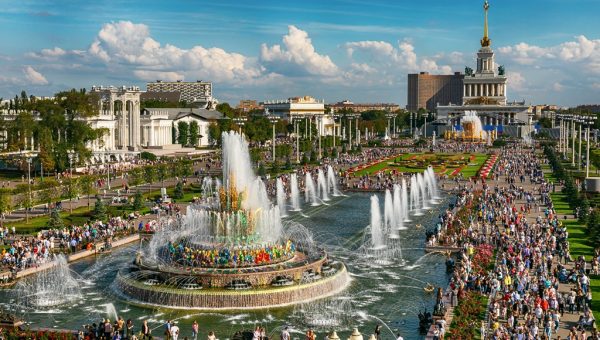
At ITB Asia 2019, Moscow City Tourism Committee shared about the Russian capital’s well-developed infrastructure in a modern urban environment. Offering high-quality tourism as well as a rich cultural and sports life, Moscow is one of the most promising tourist destinations in the world, attracting tens of millions of visitors every year since 2010. Annual tourist traffic to Moscow has almost doubled, exceeding 23.5 million people in 2018.
Proactive efforts to develop the cultural landscape of the city has significantly strengthened Moscow’s position as a global cultural hub. There is something to see and do in Moscow all year round. The city is a host to numerous national and international festivals, including the events of the Moscow seasons street festivals, which have consistently won worldwide awards. Retail, public and restaurant infrastructures have also reached new heights. New cafes and restaurants, gourmet markets and quarters are becoming points of attraction for tourists from around the world.
All these factors contribute to unlocking the enormous potential for sustainable tourist traffic growth and strengthening Moscow’s position in the travel market – both in Russia and abroad. The Moscow tourism and hospitality industry is becoming increasingly important and the government is paying greater attention to this sector by actively working to develop and promote the city as the ultimate tourist destination.
Cultural Attractions The capital’s museums, theatres and art spaces serve as guides to the city’s identity. Dive into the cultural and historical environment through visiting the UNESCO World Heritage landmarks and sites: the Moscow Kremlin and Red Square, the Church of the Ascension in Kolomenskoye and the Novodevichy Convent.
Every day – and any season – Moscow offers concerts, festivals and fairs that can satisfy the most diverse interests of Muscovites and tourists held at their world-class parks such as Zaryadye Park, Gorky Park as well as VDNH. Most of these events are free and accessible to all. In 2018, 30 major music and classical art festivals were held in the city, in addition to numerous cultural events and exhibitions.
The city’s transport system, the Moscow Metro connects all parts of the city and is the backbone of its transportation system. Some metro stations are architecture masterpieces, 48 of them are cultural heritage sites, and more than 40 are architectural monuments.
Gastronomy and Shopping Haven Moscow has experienced a genuine gastronomic boom in recent years: brand new cafes and restaurants keep popping up, food festivals are being held and modern gastronomic spaces, food halls and entire restaurant quarters are being opened. The capital’s traditional marketplaces are experiencing its peak as trendy popular destinations where one can not only buy fresh products, but also try international cuisines as well as participate in cooking master-classes.
International ratings reflect the high quality of the city’s establishments: In 2019, three Moscow restaurants were included in the top 100 restaurants in the world: White Rabbit (13th place), Twins Garden (19th) and Selfie (65th).
The city is also a great destination for shoppers. The famous GUM and TSUM department stores in the heart of the city and a host of boutiques selling clothes, shoes and accessories from luxury international brands and Russian designers offer a refund of up to 20% of the sales price via the Tax-Free system.
In almost every Moscow district, there are large shopping and entertainment centres selling popular and affordable brands. In addition to shopping, these centres offer family and children’s entertainment. Moscow also boasts a number of outlets and discount centres for promotion and discount seekers.
Discover.Moscow Moscow is progressively working on improving the tourism ecosystem which includes combining traditional products and innovative technologies used to enhance the experience in the city through the various information channels. Currently the city offers an official tourist portal, Discover.Moscow, that is available for the different needs of the travellers, as well as preparing to launch new digital services that will create an unforgettable adventure.
Explore the city via thematic routes with audio guides to sites associated with famous writers. Discover.Moscow is an official multilingual tourist portal, and modern information platform for Moscow visitors of all ages from every corner of the planet. It contains information in English, Russian and Chinese.
The portal plays an important role in raising potential tourists’ awareness of what Moscow has to offer. In addition to useful information, the mobile app includes an interactive map for real-time tracking of movements in the city and displays cultural and historical sites located nearby.
Russpass Russpass is a smart digital platform for tourists to find their way around the city and will be launched in 2020. It enables visitors to choose a route across the city designed by Moscow buffs, or to make their own individual travel plan, as well as to take advantage of simplified entry into the country.
For drawing up individual travel plans, Russpass offers tourists a marketplace with a wide range of sights and activities. After selecting the preferred sights, a smart navigation system will draw up the optimal route for the tourist, taking into account one’s interests.
Russpass provides a wide variety of urban services designed to make the tourist’s stay a memorable and comfortable experience. Desired options can be selected in the user’s personal account by saving the settings on a virtual map of Moscow.
Enjoyed this Post? Share It!
- ITB Asia 2019
- Luxe Society
- Luxe Society Asia
- Moscow City Tourism Committee
- Moscow Kremlin
- Novodevichy Convent
- Zaryadye Park
Leave a Comment Cancel reply

Elevate Your Travel Experience with Samsonite’s EVOA Z Collection

Tessellate Designs Personalised Jewellery For Everyday And Every Occasion

HOKA unveils new Raffles City store with unique artist collaborations and exclusive store-only designs!

New ADB Facility to Help Southeast Asia Revive Tourism and Boost Sustainable, Inclusive Investments
04:27 pm | 20 December 2021
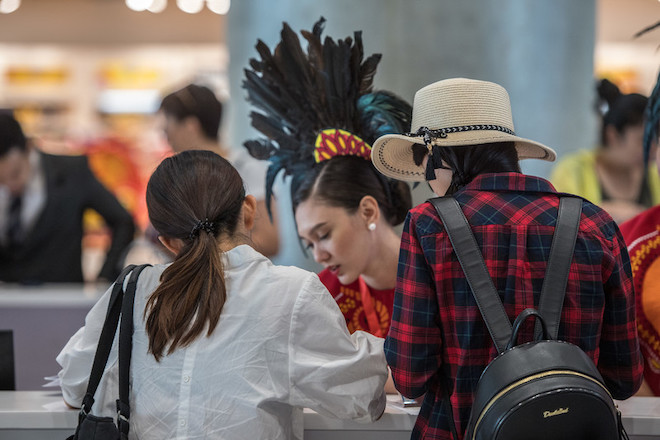
The Asian Development Bank (ADB) has set up a $1.7 million technical assistance facility to accelerate Southeast Asia’s tourism recovery from the coronavirus disease (COVID-19) pandemic, boost inclusive, sustainable development in the sector, and help local tourism entrepreneurs, especially women and youth, adopt digital platforms to grow their businesses.
The Southeast Asia Sustainable Tourism Facility will help countries identify and prepare environmentally sustainable tourism projects and catalyze private financing to support them. It will help businesses better operate tourism facilities and deliver digital tourism services. The facility will also help policy makers design visa, online short-term rental, and other policies to attract longer-staying, higher-spending visitors and remote workers, allow more small entrepreneurs to legitimately operate accommodation services, and boost tourism tax revenues.
“This new facility aims to help ADB’s developing member countries in Southeast Asia revive tourism, which has been hard hit by the COVID-19 pandemic,” said ADB Principal Tourism Industry Specialist for Southeast Asia Steven Schipani. “Projects supported by the facility will develop green and resilient urban and transport infrastructure in secondary cities to improve the tourism sector’s competitiveness, help create jobs, protect the environment, and accelerate inclusive digital transformations.”
In 2019, travel and tourism accounted for 12.1% of Southeast Asia’s gross domestic product (GDP) and employed 42 million workers, mostly women working for small and medium-sized enterprises (SMEs). But international visitor arrivals dropped 82% in 2020 from 2019, while domestic tourism remains constrained by travel restrictions and reduced economic activity. The sector’s contribution to regional GDP fell by 53% in 2020, pushing more people into poverty.
Even before COVID-19, Southeast Asia trailed global tourism competitiveness benchmarks for ground, port, and urban infrastructure, information and communication technology readiness, and environmental sustainability. Governments hope to address these challenges in tandem with efforts to revive tourism. The facility will support key tourism-related priorities set out by the Association of Southeast Asian Nations (ASEAN) and subregional tourism strategies in Southeast Asia.
The facility includes a $500,000 grant from ADB’s Technical Assistance Special Fund. In addition, ADB will administer a $225,000 grant contribution from the Project Readiness Improvement Trust Fund financed by the Nordic Development Fund, a $500,000 grant from the Republic of Korea e-Asia and Knowledge Partnership Fund, and a $500,000 grant from the Spanish Cooperation Fund for Technical Assistance.
ADB is committed to achieving a prosperous, inclusive, resilient, and sustainable Asia and the Pacific, while sustaining its efforts to eradicate extreme poverty. Established in 1966, it is owned by 68 members—49 from the region.
This article was first published by ADB on 17 December 2021.
Strengthening the Role of Ministries of Finance in Climate Action in Asia and the Pacific
Enabling safe and inclusive use of ai in southeast asia, an ecosystem approach to accelerating sustainable tourism, slum blind: the overlooked links between climate migration and informal settlements, scaling responsible digital payments in the indonesian cocoa sector, related articles, tourism grows 4% in 2021 but remains far below pre-pandemic levels—unwto, tourism unites behind the glasgow declaration on climate action at cop26, asean leaders commit to use digital tools to spur tourism, agriculture and tourism key to lao pdr's sustainable and shared prosperity—adb, green hotel investments to restart tourism.

Want to Learn More?
Subscribe to the Newsletter
Email Address Submit

IMAGES
COMMENTS
The Southeast Asia Sustainable Tourism Hub is anchored in ADB's Southeast Asia Department, Urban Development and Water Division. It brings together diverse expertise from within and outside of ADB to help clients develop and finance innovative tourism projects, build destination management capacity, and provide knowledge solutions that align with ADB Strategy 2030 and the Sustainable ...
0:00 / 2:22. The Asian Development Bank (ADB) launched the Southeast Asia Sustainable Tourism Hub at the third Southeast Asia Development Symposium (SEADS) held on 16-17 March 2022. The tourism hub aims to help accelerate the industry's recovery from the pandemic, boost inclusive, sustainable development in the sector, and help local tourism ...
Uno made the statement during the panel discussion, "Driving an Inclusive Tourism Recovery in Southeast Asia," where he and the other speakers agreed that shifting to sustainable tourism is key to reviving the region's travel sector. Tourist arrivals to the region plunged 82% in 2020 as travel ground to a halt after countries imposed ...
The Asian Development Bank (ADB) launched the Southeast Asia Sustainable Tourism Hub at the third Southeast Asia Development Symposium (SEADS) held on 16-17 March 2022. The tourism hub aims to help accelerate the industry's recovery from the pandemic, boost inclusive, sustainable development in the sector, and help local tourism entrepreneurs, especially women and youth, adopt digital ...
17 Dec 2021 | News Release. New ADB Facility to Help Southeast Asia Revive Tourism and Boost Sustainable, Inclusive Investments. The Asian Development Bank has set up a $1.7 million technical assistance facility to accelerate Southeast Asia's tourism recovery from the COVID-19 pandemic, boost inclusive, sustainable development in the sector ...
The pandemic has had devastating impacts on tourism in Southeast Asia, but it can become a catalyst to reshape the sector in sustainable and inclusive ways. ... SEADS 2022 unveiled the Southeast Asia Sustainable Tourism Hub, which aims to help clients develop and finance innovative tourism projects, build destination management capacity, and ...
The Asian Development Bank (ADB) launched the Southeast Asia Sustainable Tourism Hub on 17 March 2022 at the third Southeast Asia Development Symposium (SEADS). Southeast Asia's tourism industry is still reeling from the impact of the COVID-19 pandemic. To accelerate an inclusive and sustainable recovery, ADB is increasing its support for investments, capacity development, and knowledge.
The Asian Development Bank (ADB) launched the Southeast Asia Sustainable Tourism Hub at the third Southeast Asia Development Symposium (SEADS) held on 16-17 ...
ADB'S SOUTHEAST ASIA SUSTAINABLE TOURISM HUB LAUNCHED AT #SEADS2022. It brings together diverse expertise from within and outside of ADB to help Southeast Asian countries develop and finance innovative tourism projects, build destination management capacity, and provide knowledge solutions that align with ADB Strategy 2030 and the Sustainable ...
January 25, 2023. JAKARTA, 25 January 2023 - The ASEAN Framework on Sustainable Tourism Development in the Post-COVID-19 Era was recently released to guide the work on ASEAN's sustainable tourism development agenda. Sustainable tourism is considered as an emerging key factor for a destination's ability to maintain or build a strong ...
The Association of Southeast Asian Nations (ASEAN) has been trying to make tourism more sustainable, noting that poorly planned and managed tourism has proven to have negative impacts on host communities and the environment. Shifting to more sustainable forms of tourism is in fact part of the ASEAN Tourism Strategic Plans for 2011-2015 and ...
Photo courtesy of Mahidol University. The research team had synthesised findings from each country to make six policy recommendations towards a more sustainable, resilient and just tourism economy across the region: diversifying tourism products and greening the tourism economy. enhancing the digital transformation of the tourism sector.
Member countries can also avail of assistance from the Southeast Asia Sustainable Tourism Hub, which ADB set up to increase support for investments in the sector. With IMT-GT and the larger ASEAN community facing dual food and fuel crises, ADB supports food security in the region with a comprehensive $14-billion program through 2025. ...
The Designated Areas for Sustainable Tourism Administration (DASTA) is the Thai Kingdom's key driver in promoting sustainable tourism. The administration's portfolio includes CBT projects in Koh Chang, Pattaya, Sukhothai, Loei, Nan, and Suphan Buri, with more projects planned for rural border communities. In December 2020, the Thai government ...
Tourism of course plays a significant role in the economic development of cities in South-East Asia, In Thailand, for example, from the years 2017 to 2020, or the immediate pre-pandemic period, tourism accounted for roughly 18 per cent of the country's GDP, testifying to this sector's significant contribution to the success of the national economy.
Held last month, the workshop brought together 60 young leaders from ten Southeast Asian countries to address the critical need for more sustainable and inclusive tourism.
The new awards will now take place every two years as partial fulfilment of the ASEAN Tourism Strategic Plan 2016-2025, much of which seeks to advance sustainable tourism objectives. The nine winners in the Rural Sustainable Products category were Sothy's Pepper Farm in Cambodia, Desa Wisata Nglanggeran in Indonesia, Tree Top Explorer in Lao ...
Southeast Asia Sustainable Tourism Hub. With Southeast Asia's tourism industry still reeling from the impact of COVID-19, ADB is increasing its support for investments, capacity development, and knowledge to accelerate an inclusive and sustainable recovery. LEARN MORE
The Jakarta Globe reports that Indonesian President Joko Widodo is actively lobbying for a travel bubble to be established between ASEAN members to facilitate travel between Southeast Asia nations.. The proposed travel corridor is targeted to be established in the first quarter of 2021.It is seen as fundamental to the revival of cross border travel and tourism in the region.
Two years after world tourism descended into suspended animation because of the COVID-19 pandemic, the gradual removal of quarantine and travel restrictions across Southeast Asia is now precipitating the reawakening of tourism in the region. As reported by Beritabali.com and Suara.com, while tourism is certainly on the rebound, the recovery process will not happen on a uniform basis across the ...
Notifications; You have no notifications
Tourism, which suffered a downturn globally because of the pandemic, is a major contributor to economies in Southeast Asia. In 2019, travel and tourism accounted for 12.1% of the region's gross domestic product and employed 42 million workers, mostly women working for small and medium-sized enterprises.
Rwanda has also successfully capitalized on sustainable tourism: by charging $1,500 per gorilla trekking permit, for instance, it has maximized revenue while reducing environmental impact. Tourism players might consider taking some of these actions to lure tourists to less familiar destinations: Collaborate across the tourism ecosystem.
At ITB Asia 2019, Moscow City Tourism Committee shared about the Russian capital's well-developed infrastructure in a modern urban environment. Offering high-quality tourism as well as a rich cultural and sports life, Moscow is one of the most promising tourist destinations in the world, attracting tens of millions of visitors every year since 2010. Annual
International visitor arrivals dropped 82% in 2020 from 2019 in the wake of the COVID-19 pandemic. Photo credit: ADB. The Asian Development Bank (ADB) has set up a $1.7 million technical assistance facility to accelerate Southeast Asia's tourism recovery from the coronavirus disease (COVID-19) pandemic, boost inclusive, sustainable development in the sector, and help local tourism ...